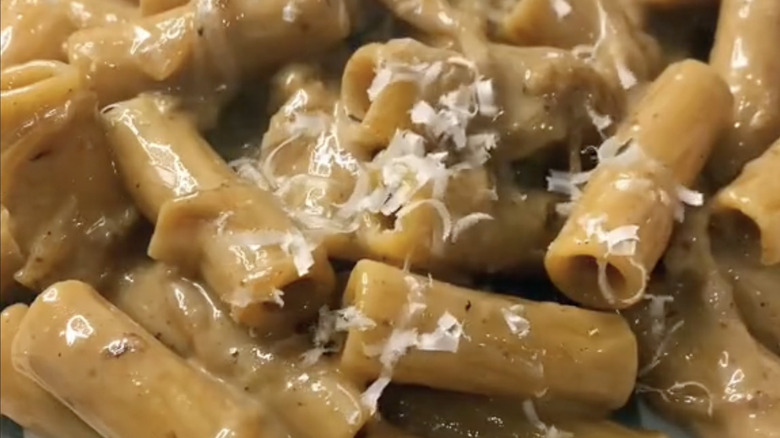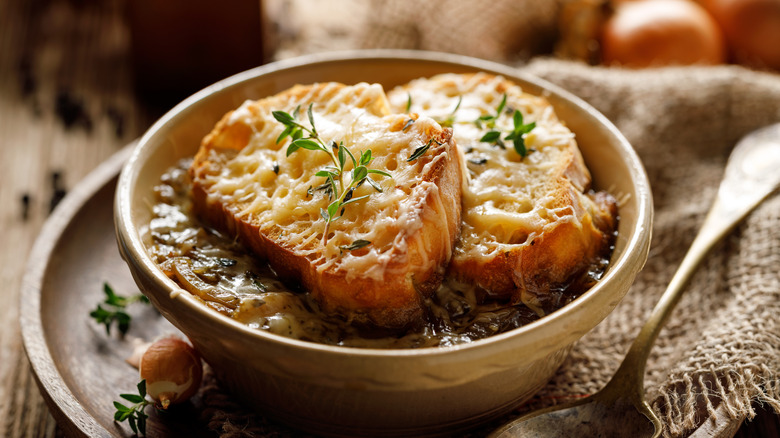What's The Deal With TikTok's Viral French Onion Pasta?
TikTok has created all sorts of minor food trends, from chopped sandwiches to pickled garlic and spaghetti alfredo. And while there are certainly a lot of people on TikTok who can't cook (some of whom may realize it and are just doing it for engagement), there are a lot of people who do display culinary ability the general public would never have been exposed to without that app. One new trend that's currently rising combines two absolutely delicious things: Fench onion soup and pasta.
French onion pasta is the sort of idea we never knew we needed, but now that it's here, it makes total sense, and we don't know how we ever lived without it. The key components of French onion soup are just beef stock, onions, cheese, and bread — there's no reason all of those together wouldn't translate into pasta form simply by swapping out the bread for another carbohydrate. It's no wonder it's taking off so much.
The cooking techniques are simple, yet classic
Here's the really impressive thing: All of these TikToks seem to make use of some actual cooking techniques. This isn't one of those videos where someone just dumps a bunch of dry pasta in a tray with slurry and then cooks it in the oven, assuming that'll make it done. Many of them are indeed actual cooking techniques that get used in the making of French onion soup.
Pretty much every TikTok recipe – and there are a lot of them – involves the same basic steps: Put butter in a pot, add onions (how many, as well as whether it's white or yellow onions, varies), and cook the onions slowly until they're caramelized. Next, add some fresh thyme and garlic, then deglaze the pot using white wine or sherry. From there, add beef stock and pasta, let it cook down, then add cream and cheese. Boom, French onion pasta.
There are some variations, depending on the video
Not every recipe will be the same, and the most significant variation seems to have to do with pasta. More than one recipe cooks the pasta separately, which is doable even if it feels unnecessary. The most typical pasta used here is rigatoni, but it varies — specific recipes use farfalle, gemelli, and even reginetti. You could use others, too; the key with pasta choice here seems to be using something with enough sturdiness to stand up to the process, meaning something like penne or cavatappi would also work. Theoretically, you could even use longer noodles, as long as you're not using something super thin like angel hair or pappardelle, which would get mushy during the cooking process.
One thing is for sure, though: These recipes are undoubtedly popular. Several of them have millions of views, and considering how many versions there are, it is definitely a certified trend. Give it a shot, and let us know how it went.


